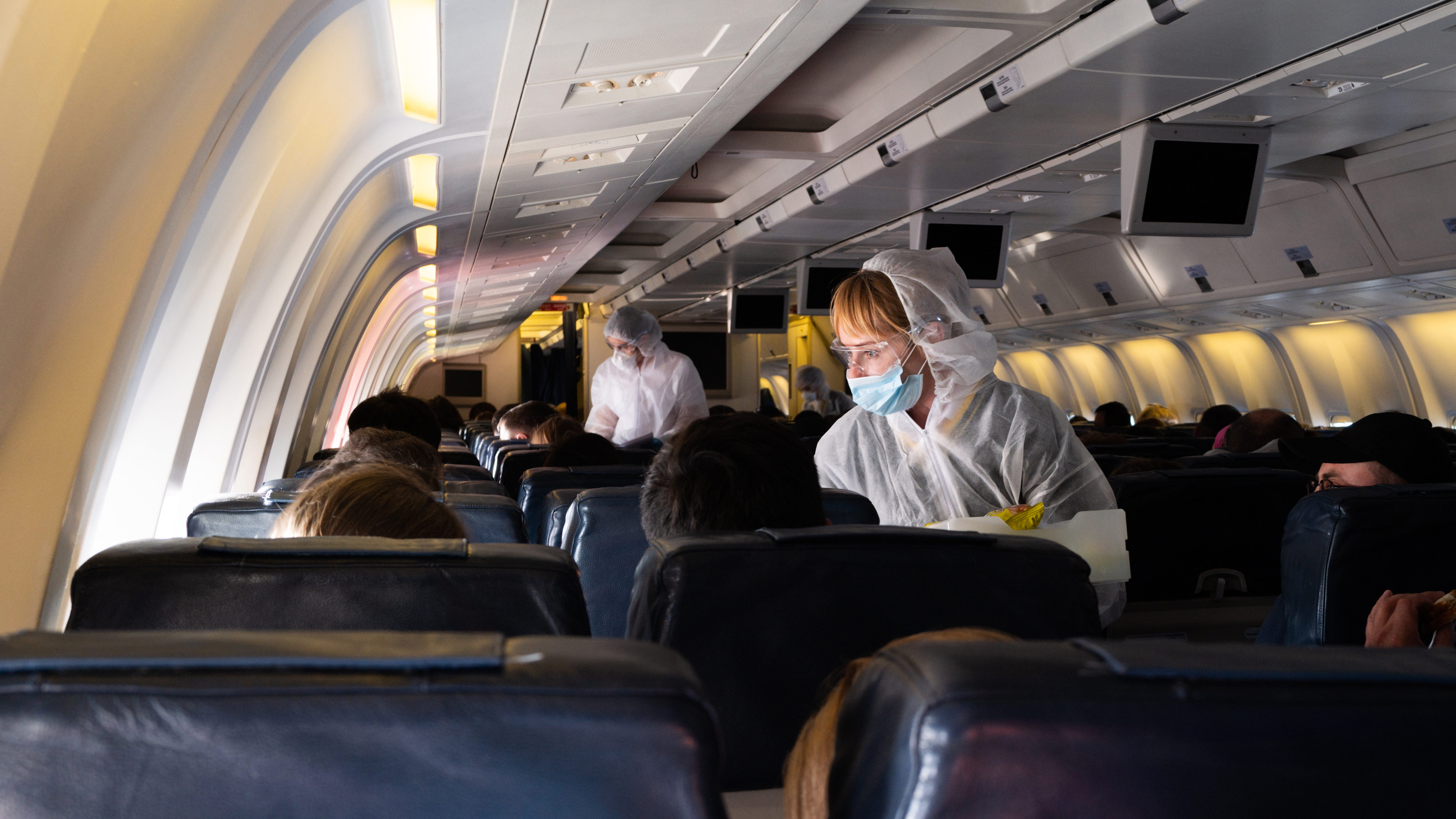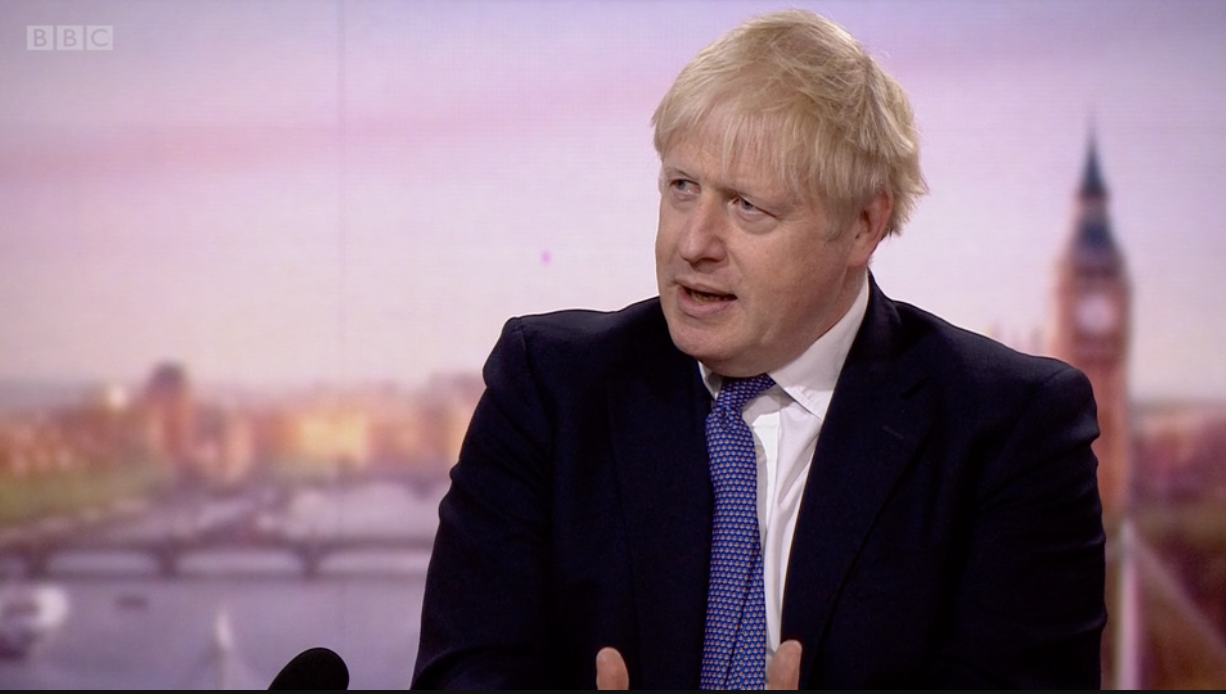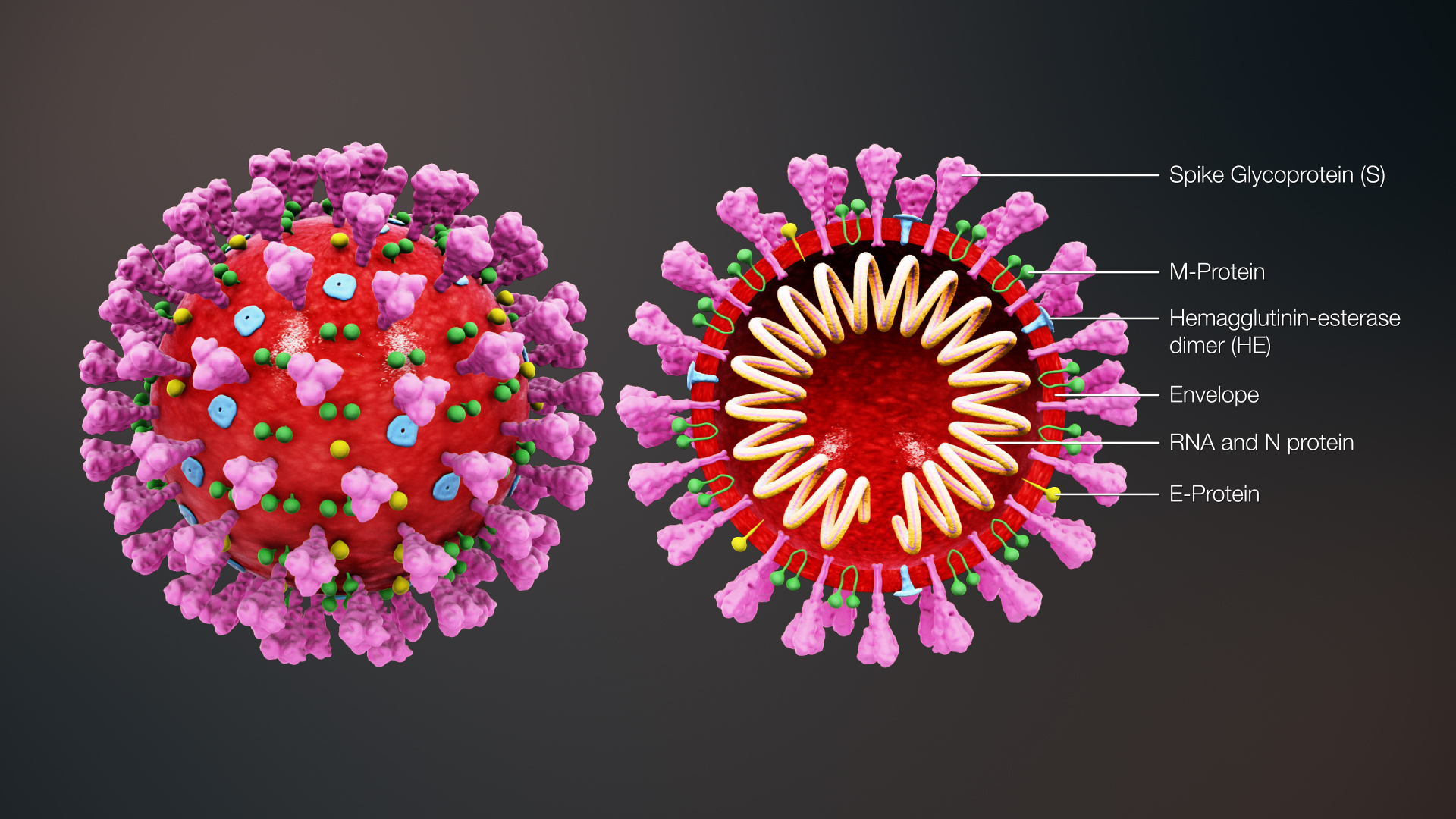Ahead of the G20 summit of the world’s largest economies, which includes a dedicated tourism segment, the World Tourism Organization (UNWTO) has signed a Memorandum of Understanding with the International Air Transport Association (IATA), as the two parties work together to restart global tourism. Highlighting UNWTO’s unique status as a bridge between the UN system and the private sector, the new agreement will focus on enhancing consumer confidence in travel and placing sustainability at the centre of recovery and future growth.
From the start of the current crisis, UNWTO has led the way in addressing the key factor needed for the successful restart of tourism. This agreement with the global trade association for the airline sector builds on this and deepens the existing collaboration between both organizations to keep geared towards restoring the confidence of travellers.
Jobseekers will be offered coaching and advice on moving into "growing sectors" as part of a £238m employment programme, the government has said.
Job Entry Targeted Support is aimed at helping those out of work because of Covid-19 for three months.
Work and Pensions Secretary Therese Coffey said it would give people "the helping hand they need".
But Labour said the scheme "offers very little new support" and it was "too little too late".
Last month, official figures showed that the UK unemployment rate had risen to its highest level for two years, with young people particularly hard hit.
The Job Entry Targeted Support (JETS) scheme will "boost the prospects of more than a quarter of a million people across Britain", Ms Coffey said.
"We have provided unprecedented support for jobs during the pandemic, including through furlough and subsidising the incomes of the self-employed, doing all we can to protect people's livelihoods, but sadly not every job can be saved," she said.
The Department for Work and Pensions says it is recruiting an additional 13,500 "work coaches" to help deliver the new scheme.
Chancellor Rishi Sunak said the scheme would "provide fresh opportunities to those that have sadly lost their jobs, to ensure that nobody is left without hope".
"Our unprecedented support has protected millions of livelihoods and businesses since the start of the pandemic, but I've always been clear that we can't save every job," he said.
"I've spoken about the damaging effects of being out of work, but through JETS we will provide fresh opportunities to those that have sadly lost their jobs, to ensure that nobody is left without hope."
However, Labour's shadow work and pensions secretary, Jonathan Reynolds, said: "By the government's own admission at least four million people could lose their jobs during the crisis. All it can muster in response are piecemeal schemes and meaningless slogans.
"This new scheme offers very little new support and relies on already overstretched work coaches on the ground, while many of the new work coaches promised have yet to materialise.
"It's too little too late again from a government that simply can't get a grip on this jobs crisis."
'Difficult trade-offs'
Mr Sunak is due to address the Conservative Party Conference later, saying the government has been faced with "difficult trade-offs and decisions" during the coronavirus pandemic.
He will say that while he cannot protect every job, "the pain of knowing it only grows with each passing day".
Mr Sunak will say his "single priority" as chancellor is "to create support and extend opportunity to as many people as I can".
"We will not let talent wither, or waste, we will help all who want it, find new opportunity and develop new skills," he is expected to say.
In an interview with the Sun ahead of his speech, Mr Sunak also defended his Eat Out to Help Out scheme after suggestions it may have helped fuel the second wave of coronavirus cases.
The chancellor said the scheme had helped prop-up two million jobs and that he had no regrets about paying for it.
Mr Sunak also strongly pushed back on the idea of further lockdowns, which he said would be detrimental not just to the economy but to society as well.
"Lockdowns obviously have a very strong economic impact, but they have an impact on many other things," he said.
On the 22:00 curfew on pubs and restaurants, Mr Sunak said ministers were implementing such rules "to try and nip this in the bud", but he acknowledged it was "frustrating".
"Everyone is very frustrated and exhausted and tired about all of this," he told the paper.
Labour's shadow chancellor Anneliese Dodds said her party had urged Mr Sunak to introduce a wage support scheme that incentivised employers to keep more staff on, but "he ignored these calls and now nearly a million jobs are at risk when the furlough scheme ends in a few weeks' time".
"When he speaks at Conservative Party Conference, Rishi Sunak must promise to get a grip of the jobs crisis before it's too late," she said.
"If he doesn't, Britain risks an unemployment crisis greater than we have seen in decades - and Rishi Sunak's name will be all over it."
Source: BBC News
One of the greatest challenges we face during the Covid-19 pandemic is dealing with the abnormality of not being able to safely share indoor spaces with people who may, or may not, be infected. Indoor environments carry a particular risk if the SARS-CoV-2 virus that is responsible for Covid-19 is transmitted as aerosols through the air which is trapped for a relatively long time in enclosed spaces.
Covid-19’s Aerosol Threat
On September 10, 2020, Dr Anthony Fauci, director of the NIH National Institute of Allergy and Infectious Diseases, reported in a Harvard Medical School Grand Rounds webcast on the status of Covid-19 transmission that “The aerosol and particle physicists that have approached us now have told us that we really have gotten it wrong over many, many years. Bottom line is, this is much more aerosol than we thought.” He went on to explain that the medical community had been defining the maximum size of an aerosol – a particle small enough to float around in the air for a long time – to be about half that of actual aerosols, including those emitted by a person when they are talking (or just breathing).
For me, this revelation of aerosol classification was not news. What I did find surprising was that medical researchers had been misidentifying the size of aerosols when the physics and methodology for determining the size of aerosol particles and droplets have been in textbooks for decades. In fact, the scientist who essentially defined an aerosol, J.J. Stokes, published his work on the subject in 1851. Physicists are not the only ones who have known this. As a graduate student in mechanical engineering in 1997, I was studying droplet sprays similar to what comes from a cough and spent many hours characterizing how the different sized droplets moved around in a turbulent air stream as they evaporated. Many of the papers I have read on cough sprays were done through university engineering departments, such as this one showing mask effectiveness which was published in June 2020 in the journal Physics of Fluids.
A Multidisciplinary Approach
The effort to figure out how to keep people safe from the Covid-19 virus in public is daunting and multidisciplinary. It requires action from a wide range of top experts in virology, epidemiology, chemistry, fluid mechanics, and other specialized areas. Programs within, or sponsored by, the CDC and NIH are supposed to bring together these knowledge sources to determine all the different mechanisms for transmitting a virus from one person to another through the air, contaminated surfaces, personal contact, or some other means.
Success in the war on Covid-19 is also dependent on the organizational directors, like Dr. Fauci, who oversee these concerted battles, as well as the journalists, politicians, and public safety authorities who provide critical information links between what the experts know and how that knowledge is used to protect the public. If too many of them make uneducated decisions or pass along misinformation resulting from bad assumptions or misinterpretation of research, the value of the work of the experts is greatly diminished. And if those in the most influential roles of government promote disinformation instead of responsibly guiding everyone through the uncertainties of the pandemic, expert analysis and advice have to compete with dangerously absurd speculation.
This is why it is crucial that the experts have a realistic grasp of the limitations of their own research and knowledge when responding to questions. There should be no expectation that any given doctor is also an epidemiologist with insights into how the price of chicken in Thailand may be an indicator of a virus outbreak in Southeast Asia. Likewise, asking an epidemiologist with no clinical experience to diagnose your sinus headache doesn’t make sense. I’m not sure if it is even possible for a single person to have true expertise in every discipline involved in fighting a pandemic, so it is imperative that journalists, government officials, and the public not expect Dr Fauci or any other advisor to necessarily have all the specific answers at hand. Such spokespersons have a responsibility to refer specific questions to individual experts, including engineers and physicists who have been studying the fluid dynamics of sprays for many years. We often want one person that we trust to have all the answers, but that is an unrealistic expectation.
I want to emphasize these points about expertise before diving into a discussion of airborne SARS-CoV-2 transmission that falls into my own knowledge area. Since I have no formal medical training, my explanations of how virus particles travel through the air and some potential remedies must be limited to my education and professional experience in spray behaviour and fluid dynamics. This examination begins at the point when droplets exit someone’s mouth and stop where they land on a surface, get caught in a filter, or are exhausted to the outdoors. It is just one part of the puzzle, but a critical one as Dr Fauci emphasized, that will allow us to figure out the safest way to get people back into public buildings.
Airborne Virus Transmission
You have questions.
The trillion-dollar question of 2020 is how exactly does the SARS-CoV-2 virus jump from one person to another and what is the best way to stop that from happening? Right now, stopping the airborne virus literally means putting up physical barriers, including space, fabric and other sundry filters, plastic sheets, and walls. But with a better understanding of how the virus is transmitted, can we apply a dose of innovation and improve that list of barriers?
What is needed to make classrooms, offices, restaurants, and auditoriums safe for occupancy? For public buildings, guidance usually comes from the American Society of Heating, Refrigeration, and Air-Conditioning Engineers (ASHRAE) and local building and health codes. But are those standards and rules good enough?
Then there are the challenges of actually getting to another building from your home without being exposed to the virus. The number of people who rely on public transportation for at least some portion of their commute is not insignificant and should be taken seriously, especially when it comes to children depending on virus-free busses to get to school. Even if a bus is 100% decontaminated before everyone gets on, will the virus particles from an infected rider get vented out before floating past or landing near other passengers?
We should start looking for answers by first asking one more question: what do we already know about virus transmission through the air and how do we know it?
Fortunately, we have the technical ability to look directly at the physical details of an infectious SARS-CoV-2 particle which is a fairly spherical assembly comprised of the virus RNA strands surrounded by a fatty lipid envelope that also incorporates a few different specialized proteins that help with the infection process. When the entire package is intact, it is infectious and called a “virion”. When hunting down virus particles, researchers will mostly come across separated virus RNA or broken envelope proteins, but it is the intact virions that we are concerned about. This species of coronavirus is new and unique, but it is not entirely different from many other viruses, so we can lean on 90 years of virology and fluid mechanics research to get a pretty good picture of how an airborne virion moves from one person to another.
Read more.
Source: Green Roofs.com
Addis Ababa, Ethiopia, 30 September 2020 – The Eastern and Southern African Trade and Development Bank (TDB) has donated US$500,000 to support COVID-19 response across Africa by the Africa Centres for Disease Control and Prevention (Africa CDC). The donation is being made to the African Union through the COVID-19 Response Fund as part of TBD’s COVID-19 Emergency Response Programme (CERP).
With this contribution, TDB, alongside a group of the multilateral, sovereign, private sector and philanthropic partners, contributes to the implementation of the Africa Joint Continental Strategy for COVID-19 Outbreak, which aims to prevent severe illness and death from COVID-19 infections in African Union Member States and minimize social disruption and economic consequences of COVID-19 outbreaks.
Admassu Tadesse, President and Chief Executive of TDB, said: “It is our duty to respond to the African Union’s call for solidarity to address today’s greatest global public health crisis. The pooling of resources and fusion of efforts of global and African institutions is certainly crucial to halting the spread of the virus and mitigating its impact on the health and socio-economic situation of our peoples. We commend the African Union for bringing African countries together to act as one, with more power and greater effectiveness.”
The continental strategy for COVID-19 response was endorsed by Africa health ministers in February 2020 and approved by the African Union Bureau of Heads of State in March to facilitate cooperation, collaboration, coordination and communication in COVID-19 response across the continent.
To ensure availability of funds to implement the strategy, the African Union COVID-19 Response Fund was established in March 2020. Efforts are now being made by several partners, including private and public sector entities, to raise substantial amounts of funds for COVID-19 response in Africa.
“Considering the socioeconomic effects of the COVID-19 pandemic on the Member States, we must continue to be proactive in our response, and continue to expand and strengthen our partnerships to fight this pandemic effectively. I sincerely applaud this valuable contribution by TDB to the implementation of the continental strategy and call on other partners to support our efforts,” said H.E. Amira Elfadil Mohammed, Commissioner for Social Affairs at African Union Commission.
“Our strategy highlights four things: cooperation, collaboration, coordination and communication. As a continent, we may not have the resources to build 1000 health facilities in two weeks like China, but we can work together collectively to mobilize partnerships, cooperation and solidarity needed to reinforce our health systems and overcome the pandemic. The donation by TDB is a good example of such partnership and solidarity,” said Dr John Nkengasong, Director of Africa CDC.
Mary Kamari, TDB Corporate Affairs and Investor Relations Executive, said: “In the face of this deadly pandemic, the Bank was quick to set up CERP, which, in addition to this donation to Africa CDC, is implementing tailored interventions in each of its Member States. CERP is boosting and complementing African Union’s support to the Member States with the donation of locally produced personal protective equipment and interventions that support small and medium enterprises, employment, and water, sanitation and hygiene (WASH).”
In addition to this donation, as part of TDB broader COVID-19 response, a set of financing interventions is also underway with enterprises and financial institutions in the region, via re-prioritized and special operations, in collaboration with the Bank’s global and regional partners.
Source: Africa CDC




